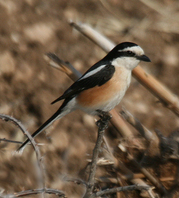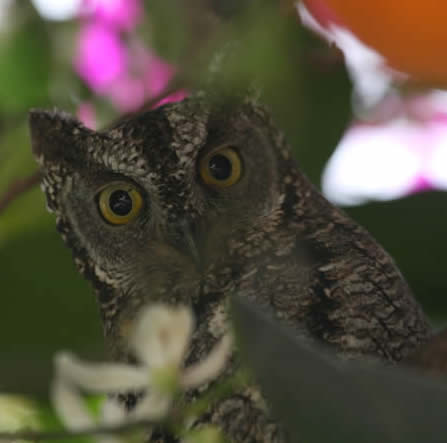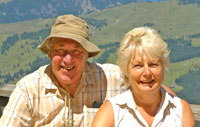Northern Cyprus
Birds and flowers in the foothills of the Besparmak mountains
North Cyprus is a sparkling corner of the Mediterranean almost forgotten by time. It has all those magical attractions: a rugged mountain range, a sparkling sea, fairy-tale Crusader castles, ruins of a glorious abbey at Bellapais, evocative classical ruins at Salamis, Byzantine painted churches and Ottoman mosques. Mix in the main ingredients, flowers and birds in abundance and the perfect recipe is on hand for a rewarding spring holiday.
One of the most attractive features of this region is the backdrop of the Besparmak range (the five finger mountains) of craggy limestone mountains that peak around 1300m (4,250ft). Hidden among these lofty peaks are the three Crusader castles, St Hilarian, Bufavento and Kantara.
Colour abounds in April when the crown anemones brighten the olive groves and the red, yellow, white or even pink turban buttercups decorate the hillsides. Overhead the birds are arriving for the summer or migrants are heading through to more northerly destinations.
There are excellent chances of seeing two birds that nest only on Cyprus. The Cyprus warbler is found here in scrub and open woodland, the Cyprus pied wheatear on more open ground. As well as these two endemic birds, though trickier to find, there are endemic subspecies of scops owl, coal tit, short-toed treecreeper, crossbill and jay. A mysterious Middle Eastern gamebird, the black francolin, is often heard, and sometimes seen in dense vegetation in grassland, crops and marshes.
Wetlands are fairly numerous in this part of Cyprus, some in the form of reservoirs and others more natural but some do depend on good rains in the winter season.
In spite of international isolation, life goes on in northern Cyprus in a very relaxed way. Tourist development has lagged behind which adds to its attraction leaving this part of the island relatively unspoilt. With improving relations, it is now possible to travel between the north and south through check-points with relative ease.
We stay at the Riverside Holiday Village in individual chalets set among lemon and almond trees, in the tranquil foothills of the Besparmak mountains. It offers comfortable accommodation and good food with opportunities for a varied morning birdwatching walk.
Birds
Scrubby areas hold spectacled warblers and Cretzschmar’s bunting, with blue rock thrush on crags. On more open areas, we keep an eye out for great spotted cuckoo, chukar, tawny pipit and black-eared wheatear, plus alpine swifts overhead. Wetlands may have spur-winged and Kentish plovers, Audouin’s gull and migrant waders can include marsh sandpiper. Pied kingfisher is a winter visitor: they might still be lingering. Griffon vultures are both a winter resident and a resident breeder and are often seen eastwards along the Besparmak range from St Hilarian castle. Buzzards are frequent and pallid harrier is a regular migrant. Colourful summer visitors arriving in April are bee-eaters, bright golden orioles and the unmistakable hoopoe.
Flowers
The flowers in North Cyprus are every bit as prolific as the birds and this limestone region of the island has an especially good orchid flora. Among the bee orchids, Kotschy’s bee orchid, Ophrys kotschyii, is a speciality to look out for as is the endemic elegant orchid, Ophrys elegans, but there are some other charmers, like the Anatolian orchid, Orchis anatolica, which is hard to beat for pure grace and elegance. Two other orchids that have a distinctly eastern distribution but can be seen here are Bornmueller’s orchid, Ophrys bornmuelleri, and Ophrys levantina.
Away from the orchids, the flora in general is very rich with 16 species endemic to North Cyprus alone. The famous black tulip, Tulip cypria, really dark crimson, is one we expect to find. Apart from the stars, the chorus backdrop of the flowers of the field will be in full attendance, including gladiolus, pheasants-eye and crown daisies.
Other wildlife
As the weather warms up the lizards make their appearance including the chunky starred agama, Kotchy’s gecko, fringe-fingered and snake-eyed lizard. Expect Montpellier snakes around too. Red foxes and hares might be the highlights of the mammals, apart from the odd feral goat!
Holiday details (from 2008)
Our visits include a selection of wetlands including Geçitköy and Köprülü reservoirs. We spend a day on an organic farm, with a home-made lunch. The ancient site of Salamis, with nearby salt flats. St Hilarian castle, built on three distinct levels is exciting for flowers. Karsiyaka has a ruined Greek monastery below the cliffs. Buffavento, wind buffeted as the name suggests, is the highest of the Crusader Castles. The Gothic Abbey of Bellapais features a walk using the old Crusader path.
Price: £1,290 per person in twin room for a full week (Sunday to Sunday)
Single room supplement: £100
En suite facilities.
Flights: Probably scheduled Pegasus Airlines flights London Stansted to Ercan, via Istanbul.
Deposit: £200
Leaders
Brian and Eileen Anderson are authors of various Sunflower Landscapes books, including ‘Algarve’ where they have led Honeyguide groups for the last three years. Now they bring to us their wide knowledge of the wildlife and walks of the Turkish part of Cyprus.
Chris Gibson is a conservation officer for Natural England working in north Essex. He has led many holidays for Honeyguide. He is an outstanding all round naturalist, from birds through flowers to moths, and great fun to be with.
Conservation project
Kuskor, the North Cyprus Society for the Protection of Birds and Nature, is a small, volunteer-based group established in 1991 that works closely with colleagues in Greek Cyprus. Work includes breeding seabird surveys, including of Audouin’s gull, and a recent success is the designation of part of the Karpas Peninsula as a specially protected area. Nearer to where we stay, a project aims to conserve ancient olive trees in the valley of Kalkanli.









